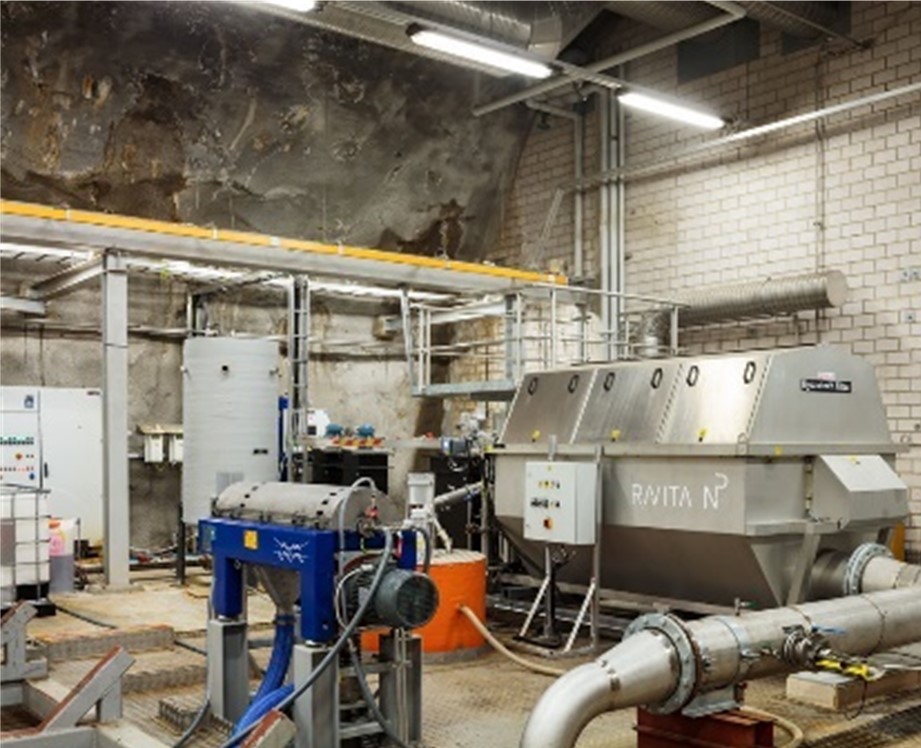Process & contact
Helsinki Region Environmental Services Authority
www.hsy.fi/ravita
Contact:
Updated 2/2022
Input materials
Chemical post-precipitation at WWTP, then P-recovery from the resulting P-rich sludge.
Also, nitrogen recovery from sewage sludge dewatering liquor.
Output products
Phosphoric acid
Recovery of iron/aluminium chemicals for use as coagulants in WWTP P-removal.
Ammonium phosphate.
Process description
1) Tertiary post-precipitation, using iron or aluminium coagulants, then separation by e.g. disc filters, to generate a P-rich sludge. This can be installed in smaller WWTPs, then the sludge transported to central processing. Heavy metals are low in this post-precipitation, so facilitating recovery.
2) Dissolution of this sludge in phosphoric acid.
3) Continuous solvent-solvent extraction to separate iron and aluminium salts in solution (can be recycled as coagulants) and phosphoric acid
4) Combination with nitrogen recovery (ammonia stripping from secondary sludge dewatering liquors) to produce ammonium phosphate.
Recovery rates (as % from the post-precipitation sludge): P >70%, Al > 90%
Because recovery is in WWTP effluent, heavy metals are low in the post-precipitation sludge, e.g. zinc 240, copper 57, nickel 13 (all mg/kg dw).
Operating status
Post-precipitation: 1000 p.e. pilot for tertiary P-removal operating since 2017 (achieving 0.4 mgP/l WWTP discharge).
P-recovery: 1000 p.e. pilot under testing, started in 2020.
